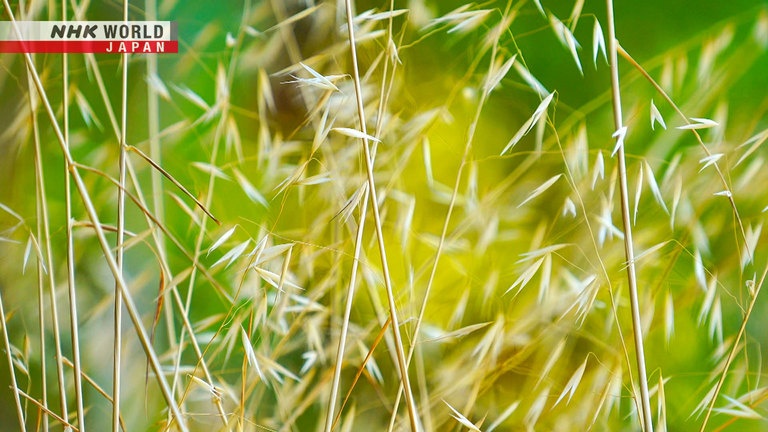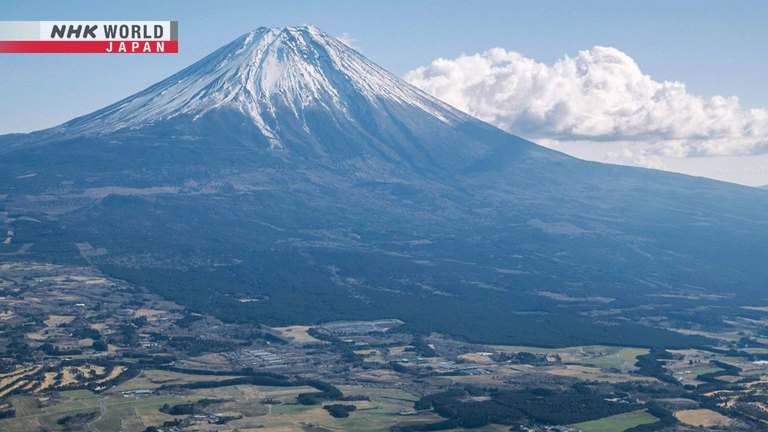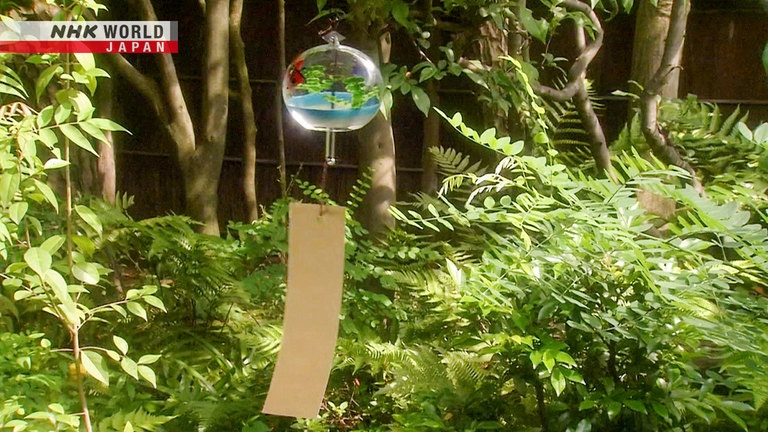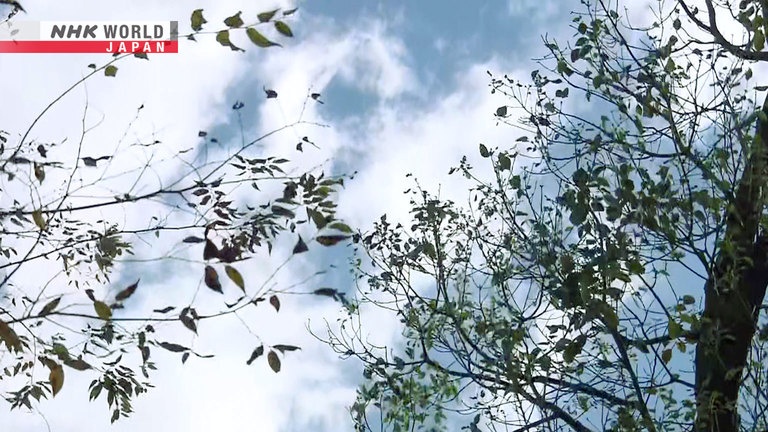Wind
The Japanese language is rich in words and expressions influenced by nature, history and culture. This episode looks at words related to wind. Due to its geographical location, Japan experiences different types of wind depending on the season. If you include regional words for wind, there are said to be over 1,000 different names for the wind in Japanese, and people have had a rich relationship with wind. From his home in Kyoto Prefecture, poet and literary translator Peter MacMillan guides us through words that were born from this culture.




Transcript
"Yukigesho."
"Karakurenai."
The Japanese language is rich in unique expressions that reflect nature and culture.
Magical Japanese.
Today's theme is "kaze," or "wind."
Hello, I'm Peter MacMillan.
Japan is a mountainous island country, and due to its geographical location, it experiences many different kinds of wind depending on each season.
If you include regional words for wind, there are said to be over 1,000 different names for the wind in Japanese, which is a lot compared to other languages.
Let's have a look at some Japanese expressions and cultural associations with wind.
soyokaze.
"Soyo" is an onomatopoeia expressing the faint sound made when things lightly touch one another.
In ancient Japanese, the word was widely used for the rustling of tree leaves and garments, and for slight movements.
Today, "soyo" is commonly used with "kaze" to describe a gentle breeze.
soyokaze.
Different onomatopoeias are used to describe the strength of the wind.
A strong and slightly chilly wind goes: hyu hyu.
And this is a fierce wind, or gale: byu byu.
Japan's complicated terrain causes "local winds" particular to specific areas in the country.
There are many such winds, and each one has a unique name.
Fuji oroshi.
"Oroshi" is another word for wind.
"Fuji oroshi" refers to the wind that blows down Mt. Fuji.
sake oroshi.
"Sake" means salmon.
"Sake oroshi" blows when salmon return to the rivers to spawn.
The season differs slightly depending on the region.
To the Japanese, wind is not just simple movement of air.
There are many interesting customs associated with the wind in Japan.
The sound of the wind is even thought to have a cooling effect!
furin.
"Fu" is another way to say wind, and "rin" means a bell.
These small bells made of metal, glass, or ceramics produce a pleasant tinkling sound in the wind.
People hang them near windows or under the eaves in the summer.
"Furin" are similar to wind chimes in the West, but their purpose is different.
In the West, wind chimes are appreciated all year round for their nice sound, but in Japan they are only put out in the summer.
When the Japanese hear the sound of a "furin," they are reminded of the wind, and they believe that it gives them a cool feeling.
Perhaps this is unique to Japanese culture.
furin.
There are other Japanese customs that bring a visual element to the wind.
Just like "furin," "kazaguruma" (pinwheels) are seen in the summer in Japan.
"Kazaguruma" spin when the wind hits them.
In addition to these customs, the Japanese have used their sense of sight and smell to express various aspects of the wind.
kogarashi.
"Ko" is one way to say tree, and "garashi" means to kill or wither a plant.
"Kogarashi" is a harsh, icy wind, that blows away tree leaves in the winter.
It's another example of words that use visual imagery to describe the wind.
kogarashi.
kaze kaoru.
"Kaoru" means "to carry or emit a scent."
"Kaze kaoru" is used to express how a forest breeze gathers the refreshing scent of leaves and trees.
It reflects how people use their sense of smell to appreciate the wind.
kaze kaoru.
The wind can also signal a change in the seasons, particularly in spring and autumn.
haruichiban.
This literally means the "first wind of spring."
It's used for a strong wind, that blows in early spring when the temperature rises, and the winter shows signs of ending.
The word is widely used in weather reports to welcome the arrival of spring.
haruichiban.
In the autumn, a nice cool breeze blows through, and brings relief to the hot and humid days of summer.
So the Japanese particularly regard the autumn winds as special.
When you look at Japanese classical literature, this becomes very clear.
On the path in the sky
where the seasons summer
and autumn pass each other there must be a cool breeze
blowing on one side of the road.
On the path in the sky
where the seasons summer
and autumn pass each other there must be a cool breeze
blowing on one side of the road.
In this poem, I love the way in which the poet visualizes the two seasons as travelers on the same road; on one side of the road, the summer is going away, and on the other side, the cool breezes of autumn are coming.
It's very poetic!
Next, let's have a look at some expressions involving the wind, that are used in daily conversation.
kaze no tayori.
"Tayori" is a letter or message.
"Kaze no tayori" literally means "a letter from the wind," and refers to a rumor.
In English you might say, "a little bird told me."
I heard through "kaze no tayori" -- a rumor -- that she dumped her boyfriend.
kaze no tayori.
fuunji.
"Fu" is another reading for kaze, and "un" means cloud.
"Ji" refers to a person.
A strong wind gathers the clouds into dynamic shapes.
Drawing on this phenomenon, "fuunji" describes people who capture the tide of the times, and rapidly achieve fame.
He introduced a technological innovation and
is now a "fuunji" -- star -- in the industry.
fuunji.
Japan is an agricultural country, and the wind has always had very large effect on the lives of the people.
The Japanese have worshipped the wind since ancient times.
fujin.
The "fujin," or god of the wind, has been a popular figure since ancient times.
"Fujin" is commonly shown holding a sack that generates wind.
Since before the arrival of Buddhism in Japan, farmers had been offering prayers to the wind god, and holding festivals to appease him.
The wind helps pollinate crops and prevents insects from eating them, but typhoons can also be the cause of crop failure.
The Japanese have always had a complex relationship with the wind -- the wind is a source of fear, but also something to be respected.
That's all for today.
Phew, I'm so hot after all those explanations.
See you next time.
Bye.